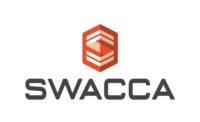With the project overseen by USDOE and ORNL engineers, the high school facility was constructed utilizing of variety of EIFS on disparate walls, each of which was clad with an EIFS finish to ensure that the structure remains aesthetically consistent on the exterior.
The goal of the study is to investigate and monitor the thermal and moisture performance of walls with the new technology involving the fluid applied air/moisture barriers and to factor the outside weather conditions into a hygrothermal computer-modeling program that will assist architects, engineers and builders in the selection of wall assemblies appropriate for the geographic region. The emphasis will be on energy savings, the reduction of green house gases, lowering the cost of utilities and making structures more comfortable.
"We see this study as an important step in assisting the architectural and building communities devise carefully considered solutions in the selection of EIFS wall assemblies," said Stephan Klamke, EIMA executive director. "By taking into consideration local climatic and atmospheric data, and applying it to the performance of various wall assemblies, we believe we can create a useful tool that ensures the optimal EIF system will be selected that will yield the greatest long-term performance. We are extremely excited about the data that USDOE and ORNL will capture over the course of this study and what it will contribute to the selection of appropriate EIFS wall assemblies in the future."
The NET facility will feature various panels that incorporate diverse wall assemblies. Everything from conventional EIFS, ventilated EIFS assemblies, to various types of moisture drainages systems, to brick, cement board siding, and stucco will be featured on the project. Data will be captured on their performance characteristics for the South Carolina climate conditions for each of the system types featured. The same approach could be applied to glean relevant data in other climate conditions, as well.
The project has also been supported by Buffington Homes L.P., the contractor for the project, Applied Building Sciences, the project architect and engineer, and National Building Science Corp., the project coordinator. Other contributing companies included CertainTeed, DuPont, Fortifiber and Jeld-Wen.





